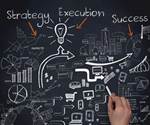How to Improve Tooling Supply Chain Transparency
An automated tooling supply chain management system will maximize efficiency, minimize risk and improve tooling supply chain transparency.
Share
Automated tooling supply chain management allows OEMs to analyze their tooling performance and maintenance schedules in real time. Image courtesy of emoldino.
When OEMs outsource their parts production to external suppliers, they are dependent on their suppliers to precisely track the number of units that will arrive, quality issues and expected delays. Many large OEMs still lack visibility into their tooling supply chain and struggle to track the exact status of their tooling.
For example, consider a large OEM that gives its tooling to a supplier and asks them to produce 100,000 parts within a month. Between the OEM sending the order and the supplier producing the products at the other end, the supplier does not provide updates and information. When the deadline hits, only 90,000 parts arrive on time, then three months later the tooling breaks down, and the reason for the early breakdown goes unidentified due to a lack of data.
In this case, the molder may have used the tooling improperly to produce parts faster than recommended, which can lead to quality issues, or they may have used the tooling to create counterfeit parts to sell and make a side profit in secondary markets. These costly problems can be prevented.
Here are a few recommended steps to increase the transparency and efficiency of the supply chain:
-
Implement an automated tooling supply chain management system that uses software and counters installed directly on the molds to collect all relevant tooling data, eliminating a tooling engineer’s redundant data collection and analysis work. Consider a system with hardware that automatically collects raw data from each mold, which is then wirelessly sent through a terminal to the software. From there, the software automatically analyzes the raw data and produces graphs offering users strategy options in real time (every 10 minutes) that is accessible anywhere in the world via the cloud.
-
Use the real-time data collected by the automated tooling supply chain management system to conduct a regularly scheduled analysis of tooling performance and to analyze the areas of the supply chain that need improvement. For example, one supplier may be consistently under maintaining the molds, leading to breakdowns or stoppages in production.
- Employ protocols that monitor mold maintenance, such as date of last PM, to identify potential disruptions in the tooling supply chain as early as possible.
- Once the data from the mold counter reaches the automated tooling supply chain management system, it will send a notice to the engineering department indicating the need for new tooling to replace the deteriorating product, which will save suppliers time and ensure that OEMs receive their parts on schedule.
These steps will ensure that each link in the supply chain spends less time collecting basic data and makes fewer assumptions about disruptions. Instead, each company in the supply chain will use and analyze the data collected by the system to determine root cause and then make the necessary improvements, reducing the risk of repeating the same mistake.
For More Information
eMoldino
+82-70-7678-6388 / mardi_park@emoldino.com /eshotlink.org
Related Content
How to Manage Wall Thickness Changes in Your Mold Design
To ensure even filling and cooling, consider wall section transitions, corners and fillets, ribs and bosses, lip and rim designs and CAE flow simulation software.
Read MoreTolerancing in Mold Design, Part 2: Using GD&T to Address Conventional Tolerancing Issues
Mold designers can achieve a single interpretation of workpiece functionality when following the American Society of Mechanical Engineers Geometric Dimensioning and Tolerancing standard.
Read MoreHow to Analyze and Optimize Cutting Conditions to Reduce Cycle Time
Plastic injection mold design and manufacturing company puts NC program optimization software module to the test. The results were surprising.
Read MoreTolerancing in Mold Design, Part 1: Understanding the Issues of Conventional Bilateral Tolerancing
Mold designers must understand the location, orientation and form limitations of conventional tolerancing before changing to another dimensioning system.
Read MoreRead Next
Creating an Effective Supplier Management Scorecard
Keeping Up with ISO columnist, Lewis Yasenchak wants to help moldmakers measure performance metrics across their supply chain with this quick-read. How often do you check your supplier management scorecard?
Read More













